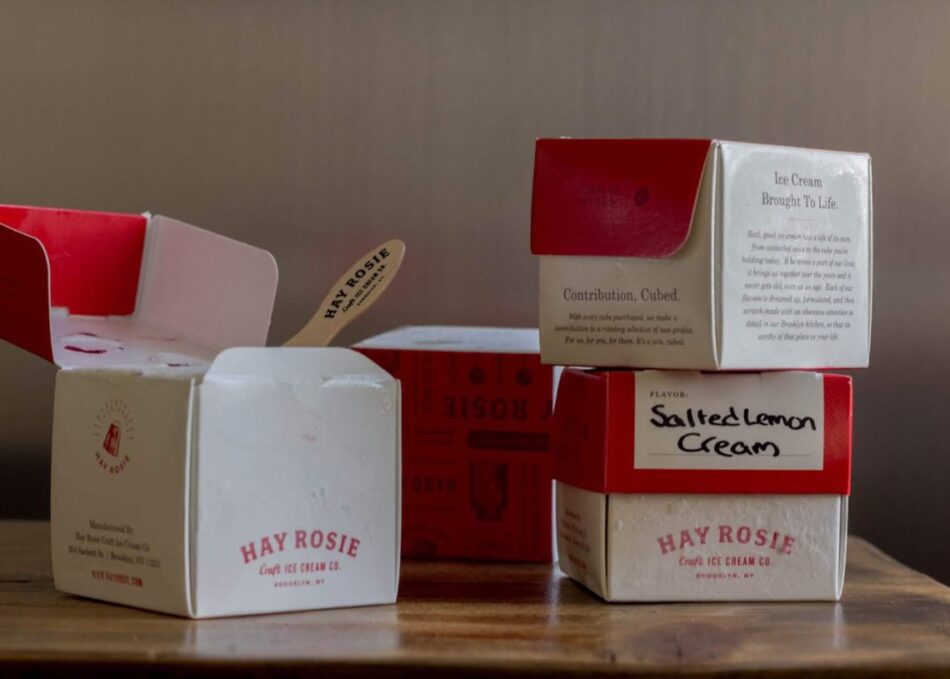Introduction
You might not be thinking about the packaging supplies when you are thinking about ice cream but it is very important. Effective packaging is crucial not only in maintaining the quality of ice cream but also in marketing and product identification. Ice Cream –Packaging: Types of Packaging, Materials, Trends, and Environmental Impact.
The Significance of Ice Cream Packaging
Preserving Freshness and Quality
One of the main functions of ice cream packaging supplies is to maintain the freshness and quality of the product. Ice cream is a thermo plastic product and requires careful packaging to keep the product in good form from the processing line to the consumer’s hand. This includes making sure the packaging is both oxygen-tight and heat-resistant so as to avoid freezer burn and ice crystal development.
Enhancing Customer Experience
The packaging also plays a great role in improving the experience of the customer. Good packaging in attractive and easy to handle containers makes the ice cream a desirable product for consumption. The reason is that scooping ice cream from a nicely designed tub or cup makes ice cream to taste better. That is not a coincidence – well-thought packaging adds to the entire experience.
Brand Visibility and Marketing
Lastly, packaging can be considered as an effective form of promotion. Here, the appearance, colors, and overall look and feel of the packaging can entice customers, communicate brand values, and leave a lasting impression. We have a saying – people eat with their eyes’, and packaging is a large aspect of what can influence a consumer to buy one product over another.
Types of Ice Cream Packaging Materials.
Cups and Containers
Paper Cups
Paper cups are mostly used for single serving portions of ice cream. They are relatively thin, environmentally friendly, and adaptable to logo and design printing. These cups can be useful for ice cream parlors that will want to have a distinct image.
Plastic Containers
For take home options, plastic containers are commonly employed. They offer a better seal and are more robust; therefore, suitable for bulkier products like ice cream with long-term expiration. But they are not as environment friendly as paper products are.
Cones
Waffle Cones
The traditional waffle cone is another good option as it provides an extra crunch to the ice cream. They are commonly prepared in front of customers in stores and may vary in flavor and appearance.
Sugar Cones
Another favorite is sugar cones which are sturdy and have a slightly sweeter taste than waffle cones. They can easily withstand the melting ice cream and make a crispy sound with every bite.
if you want to know more about custom baking boxes visit topusapackaging
Tubs and Pints
Single-Serve Tubs
Singe serving tubs are ideal especially for controlling the serving size and ease of use. These are usually made from plastic or paper and have a tightly fitting lid to help maintain the freshness of the ice cream.
Family-Size Pints
Pint sizes are available in family sizes for sharing and storing more. These containers are durable and come with secure lids to avoid spills and freezer burn.
Wrappers and Sleeves
Individual Wrappers
Single serve packaging is used for items that serve one person such as ice cream bars and sandwiches. They hold the ice cream safely and are usually made in a way that is appealing for consumers.
Multipack Sleeves
Multipack sleeves are applied to pack a number of individual products in one package for convenience of handling and storage. They also offer extra space for branding and product information.
Packaging Materials for Ice Cream Products.
Paper-Based Materials
One of the most common types of materials is paper-based because of its biodegradability and usability. They are easily printed on so they can be used for custom designs and branding.
Plastic Materials
Plastics provide better strength and resistance to moisture and temperatures variations. However, they have an unfavourable impact on the environment since they cannot be recycled or decomposed as quickly as paper.
Biodegradable Options
Environmental friendliness is thus on the rise with more consumers and companies finding biodegradable alternatives more suitable. These materials are more degradable and therefore experience less issues with landfills and oceans.
Designs for Ice Cream Packaging: The Influence of Individual Differences.
Branding and Logo Placement
The use of branding and logos on the packaging materials makes the product to have a distinct identity from other products and this is very important in ice cream packaging. This may range from the color pallet to the type of font used on the packaging.
Custom Shapes and Sizes
The additional option of custom shapes and sizes enables brands to cater to definite product differentiation demands of consumers. This could be mini tubs for a quick treat for a few or larger family-sized packs.
Eco-Friendly Designs
Green designs concentrate on utilizing environmentally friendly materials and eliminating waste. This not only makes it appealing to consumers who are conscious about the environment, but it also leads to the overall mitigation of carbon emissions associated with the product.
Energy consumption and greenhouse gas emissions of ice cream packaging.
Sustainability Challenges
The ice cream industry today has numerous sustainability concerns mostly due to the materials used in packaging. Of the various forms of waste, plastic is of particular concern due to its slow rate of degradation and its impact on wildlife.
Innovations in Eco-Friendly Packaging
Technologies like the biodegradable packaging material are already finding ways of solving these problems. Brands are experimenting with earth-friendly materials such as biodegradable plastics, compostable paper, and in some cases, even food-based packaging.
Conclusion
In conclusion, ice cream packaging supplies are important in maintaining consistency and quality of a product as well as increasing the value of the product to customers.

